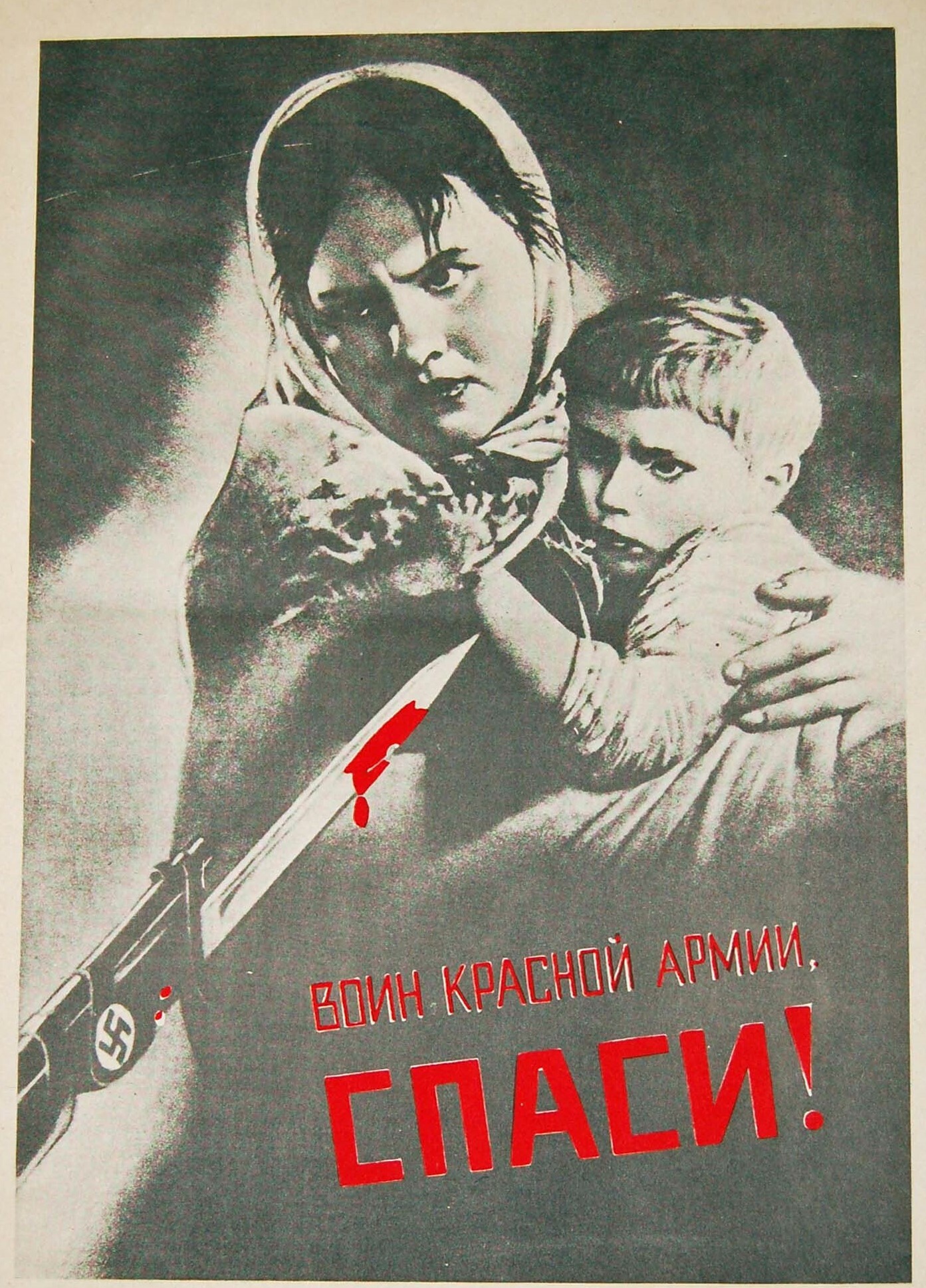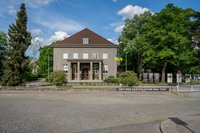Plakat „Soldat der Roten Armee, rette uns!“, Sowjetunion, 1942. Der Urheber des weit verbreiteten Plakats war der sowjetische Grafiker Viktor Korezkij, der eine Reihe bekannte Plakate während des Zweiten Weltkriegs schuf. Das Plakat von Korezkij wurde in Millionenauflage gedruckt und auch in Zeitungen veröffentlicht. Im Großformat hing es an Hauswänden. Propaganda hatte schon vor dem Krieg eine große Rolle gespielt. Die sowjetische Führung konnte daher auf gut funktionierende Propagandastrukturen zurückgreifen.
en









